
UX/UI designer based in North West London passionate about delivering user-centered experiences with interaction design. I am committed to improving the lives of others through design using high levels of collaboration, creativity and teamwork.
A little bit about me
I’m Saniya Sethi, born and raised in North West London and a recent graduate of the MA User Experience and Service Design course at Loughborough University.
Growing up, I was always an introverted and sensitive individual who often found comfort in the quiet corners of my mind. My deep sensitivity towards the emotions of others has led me to have empathy as one of my strong characteristics. I am always ready to lend a helping hand to those who may need it and I’m grateful I can utilise this characteristic in the design world.
My passion for UX Design began during my undergraduate degree in Digital Media. After being taught a small percentage about developing wireframes and high-fidelity prototypes of a website or app, I was interested in creating designs focused on the human level of interaction rather than the technical side. I was attracted to ensuring every interaction the target user would encounter was a valuable and enjoyable experience. I then pursued a master’s degree in User Experience and Service Design and am now ready to embark on my career as a UX/UI Designer.
Completing the master’s course has allowed me to conduct extensive user research to understand their needs and pain points, identify opportunities to create user experiences to fulfil those needs and progress on my talent of designing transformative products/services. I am thankful for the master’s course as it highlighted some of the more important aspects of UX design that I may have overlooked, such as the significance of going backwards and forwards in a design process, the value of design principles, usability heuristics and more.
As a newly established UX Designer, one of my main goals is to design experiences suited to the user and inclusive to as many people as possible, regardless of their abilities, age, gender and backgrounds. Inclusive design interests me as I have personal connections with people with accessibility concerns, so I know first-hand the challenges they can go through.
Below is a UX case study for my final project completed at Loughborough University.
Improving the work-life balance for female nurses
activate
Introducing ‘activate’ a dedicated wellbeing app for nurses, focused on providing guilt-free self-care through various activities. Features an anonymous messaging chat for open discussions and a resourceful page offering wellbeing insights, games for relaxation, and more.
The problem
60%
of female nurses struggle to balance their personal lives after extended shifts, raising their risk of experiencing anxiety or depression.
178%
increase in female nurses leaving the NHS from 2011 – 2018 due to unable to cope with the intense pressure
76%
of 1.3 million healthcare workers were women. Nurses who are mothers are more vulnerable to mental health issues.
Initial goal
The focus of this self-directed project will explore the impacts of an unhealthy work-life balance for women aged 25-45 with a family who are currently working as nurses so that I can design an appropriate solution that improves their daily lifestyle and wellbeing.
Primary research
Once I obtained approval for ethics, I used the snowball and convenience sampling techniques to recruit my participants. Using the snowball sampling technique through a relative allowed me to conduct research with participants that would have been difficult to sample due to ethical reasons for the participants needing to work in healthcare. My participants included four female nurses (aged between 25 and 45 with two or more children) and one life coach supporting women in healthcare.
Research methods
I used various creative methods with each of them, helping me gain diverse insights in different ways. For example, the fact + fiction activity clarified some of the assumptions, such as the importance of connecting with other nurses or mums, was categorised as being a ‘must have’ factor according to the expert. Also utilised more interactive methods like participant observation and diary studies to discover their individual stories and real-time challenges.
Having an introverted and sensitive personality helped during this phase as I naturally became the observer and listener in most situations, enabling me to focus on more intricate factors like body language and hidden insights.
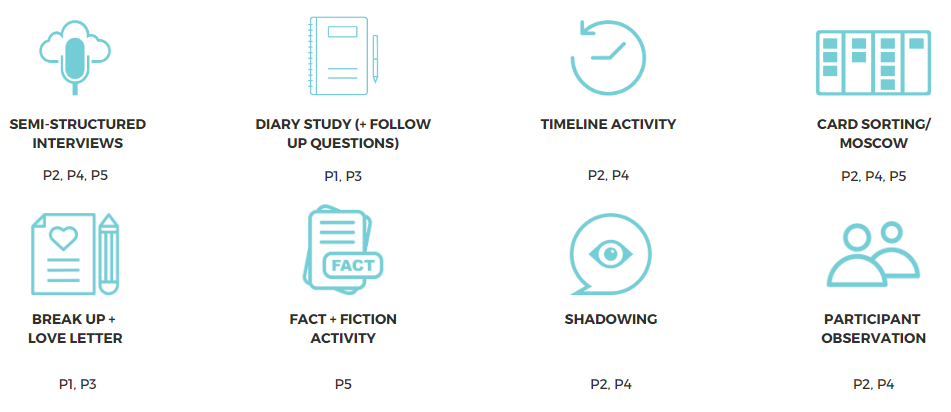
Initial findings
To conclude all the data I have obtained, I undertook affinity diagramming and variable analysis to identify the key insights that can be used for innovation in the next stage. Using the findings from affinity diagramming, I conducted variable analysis to look for any patterns where the participants were clustered together and tried to understand if their relationship made sense. I then selected the variables with the most prominent patterns and converted them into insights. The two main insights were the feeling of guilt and gender inequality for household chores.
I also detected a common link between them of lack of productivity. Due to them feeling guilty, they don’t function as well when working or at home as they feel tired and unable to complete tasks which is the same with the household chores. They are expected to do all the household work, which means they become unproductive for their tasks.
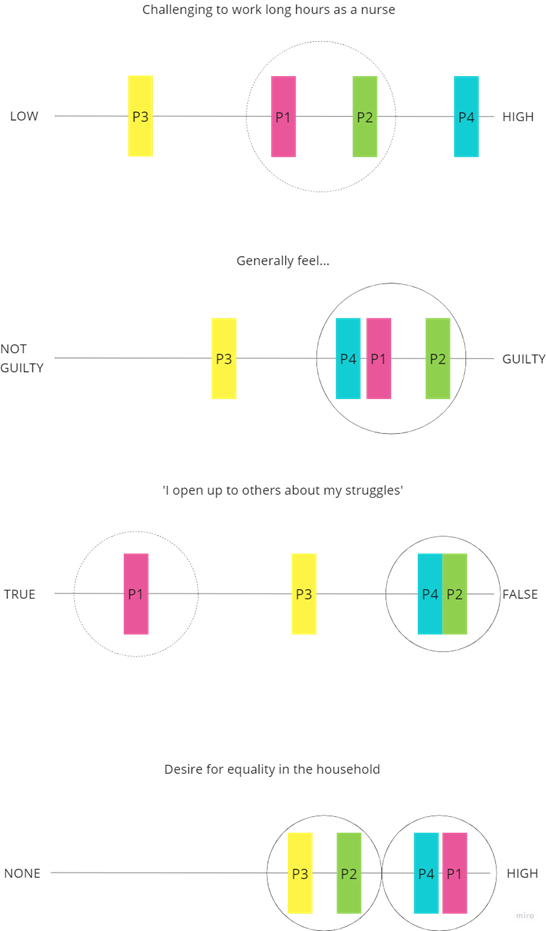
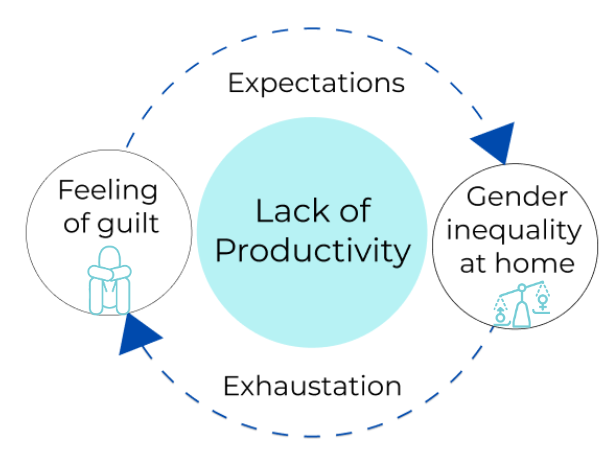
Iterative design process
The image below represents my iterative design process for the final eight weeks of the project. As the designer of the solution, I felt it was vital to utilise an iterative cycle to refine and revise the product quickly, especially when it is crucial to identify the features and functions more deeply.
I was once someone who often took the easy route, experiencing no hurdles or challenges. However, over the last year, I have grown into welcoming challenges that enable me to make complex decisions, forcing me to become adaptable to change and leading towards a more iterative mindset. I am grateful for this diversion and look forward to expanding on it in my career.


New direction
1
‘Despite nurses’ existing knowledge of healthy behaviours…it does not always translate to self care’
2
68% of female nurses prioritise their patient’s health and wellbeing before their own. Feel they need permission from others to be self-caring and self-compassionate
3
‘Identified as being “heroes” throughout the COVID 19 pandemic making them feel like they shouldn’t ask for help’
Refined vision
There is an opportunity to design a product or service for female nurses who are also mothers who want guilt-free time and a safe space to openly communicate their struggles BUT live in fear of judgement from society making them reluctant to engage in mental health and wellbeing support.

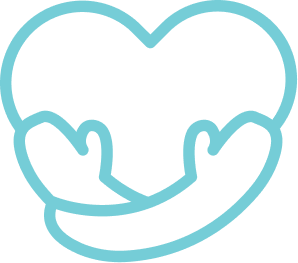
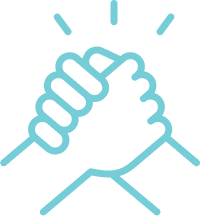
Guilt-free
Self-love
Reassurance
Updated persona
Based on the refined vision, I updated the persona to help me better empathise with my main user group and prioritize goals according to their needs.
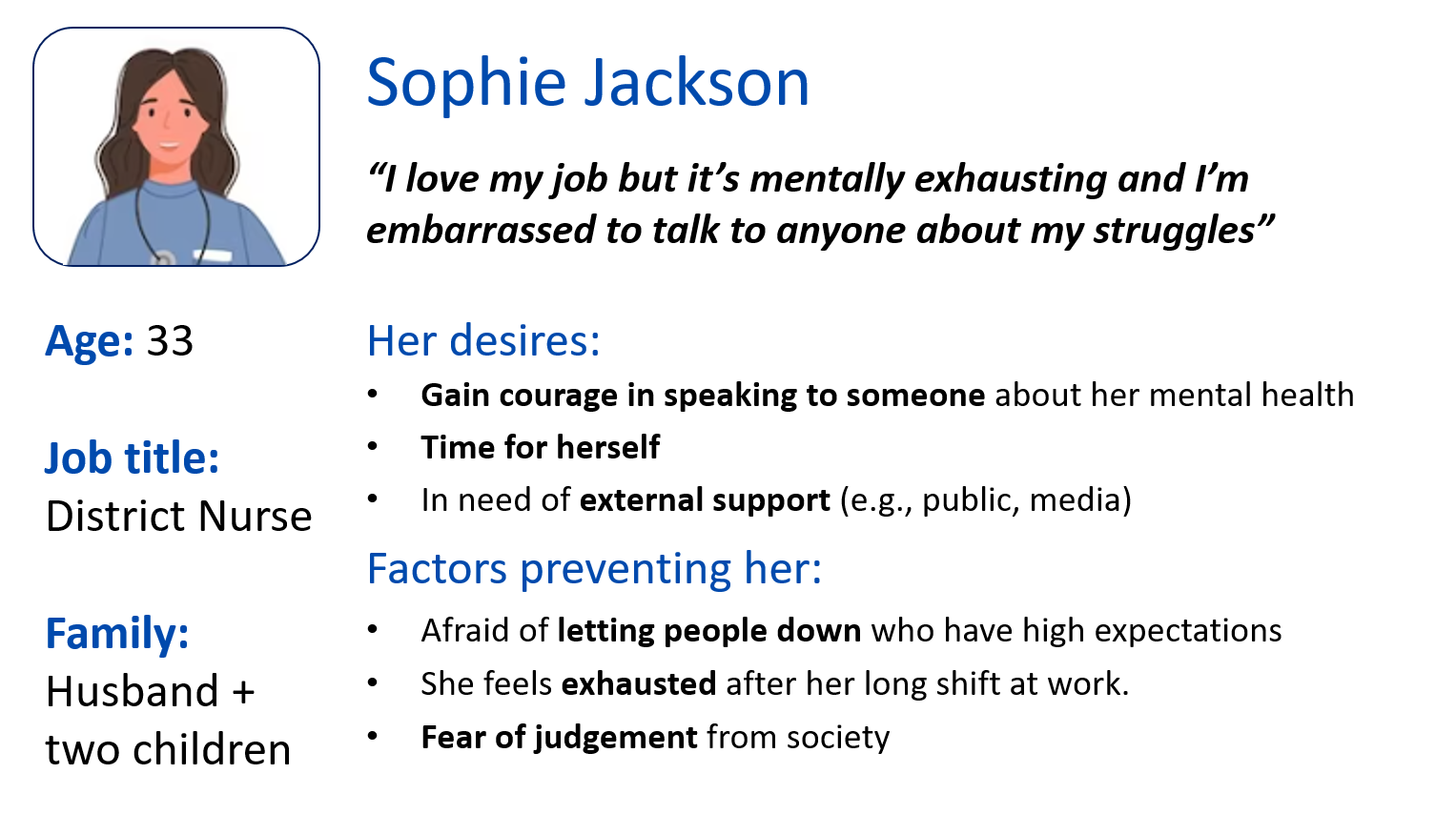
User journey
After conducting co-designing workshops and researching behaviour change with the COM-B model, I found that the preferred idea was having a gamified wellbeing app. The app will provide activities (e.g. challenges or experiences) encouraging them to have guilt-free time personal time. This will allow them to take initiative and gain control over their health and wellbeing.
I created a user journey map for one of the features to help me better understand the user’s experiences with the app. I illustrated the journey map from Sophie’s perspective, detailing the steps she took to discover the app ‘Activate’ and realising it is the right solution to solve her pain points.
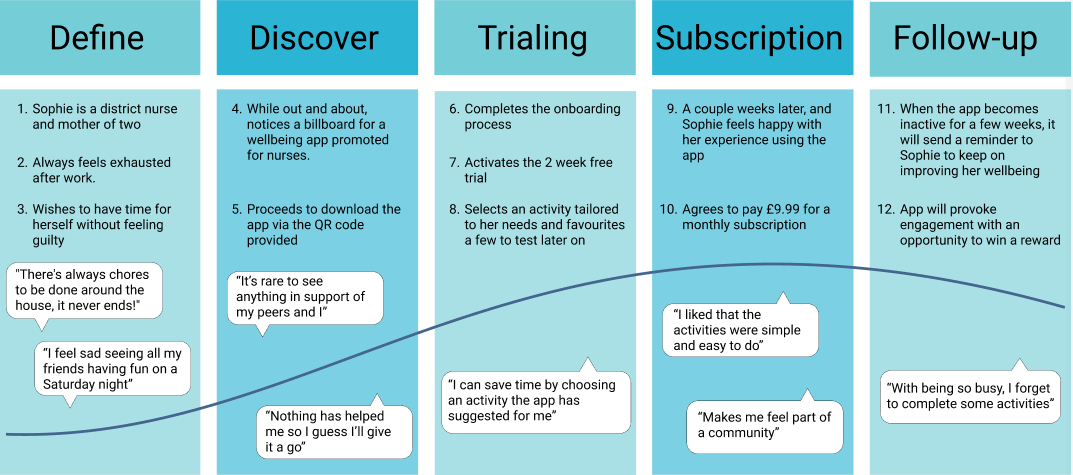
Final outcome
Advert
The purpose of the advert is to promote the app within the public domain helping to reduce the stigma and raise awareness about the challenges that female nurses go through. It’s placed on a billboard by the supermarket as that was one of the main spots my participants said they would be more likely to notice an advert.
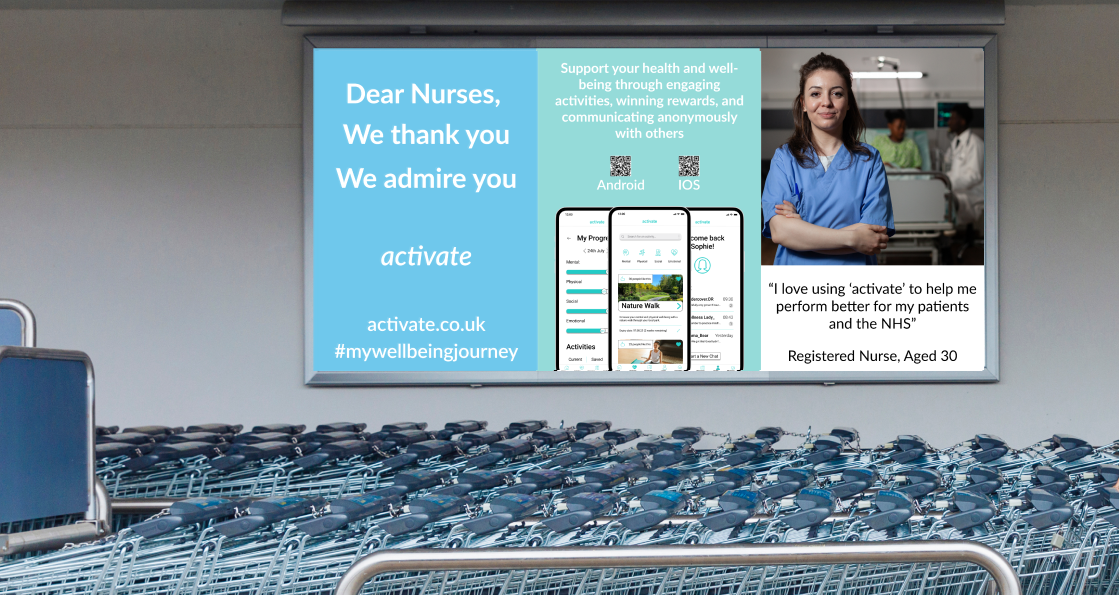
App
‘Activate’ has 3 main features:
- It is fully option-based, driven by several factors such as allowing users to select activities aligned with their interests and goals personalizes the experience.
- Offers one-to-one support with an anonymised messaging feature to talk with others about their struggles in a safe space.
- Incorporating point-based incentives through additional resources to enhance their knowledge, for example, could lead to increased interaction, encouraging engagement.
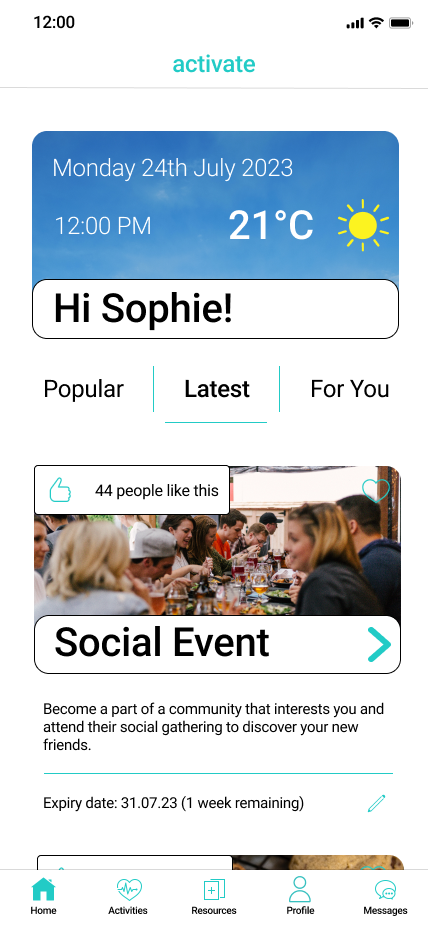

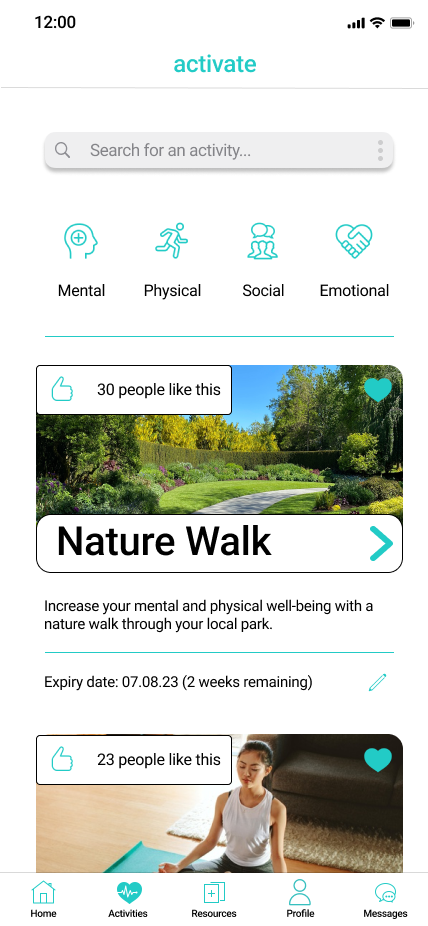
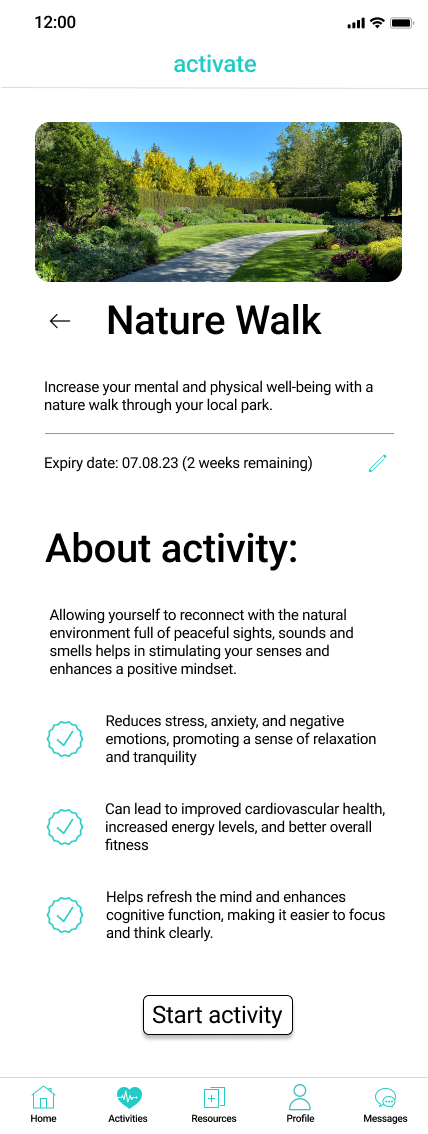
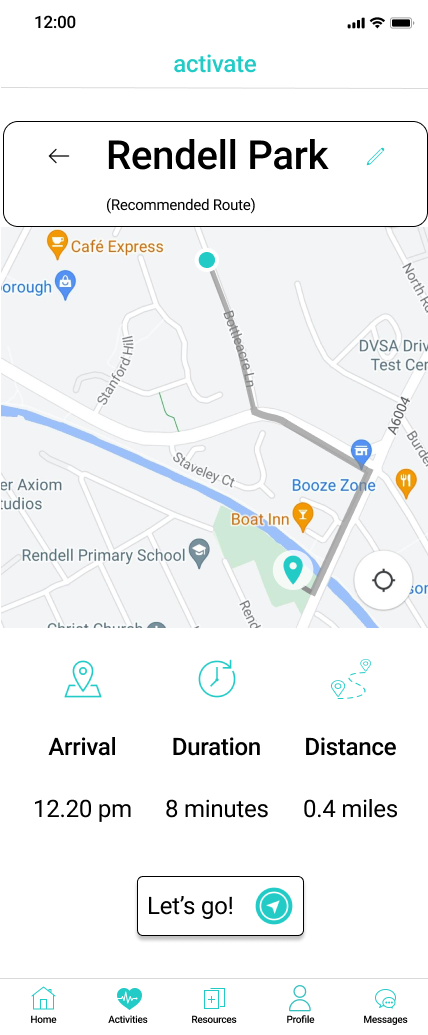
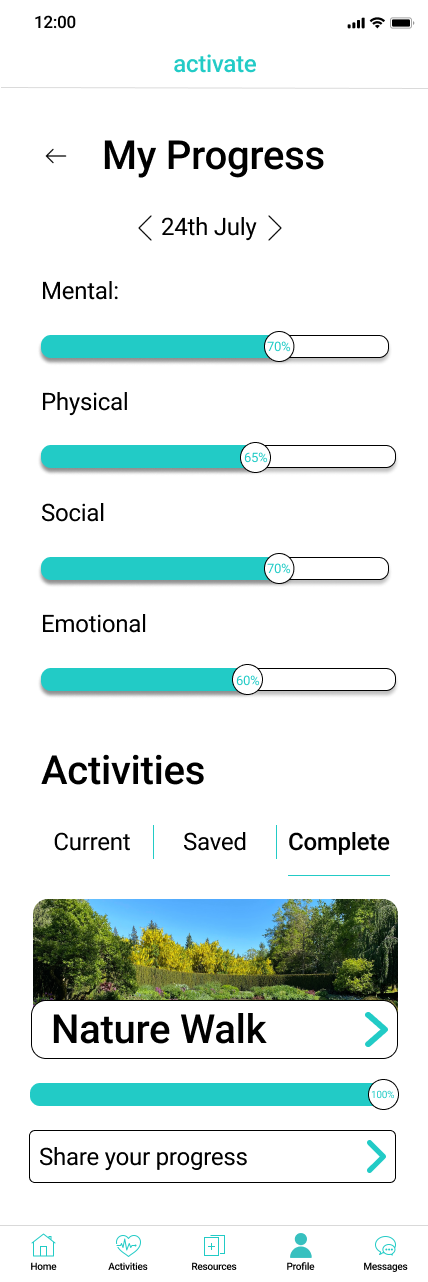
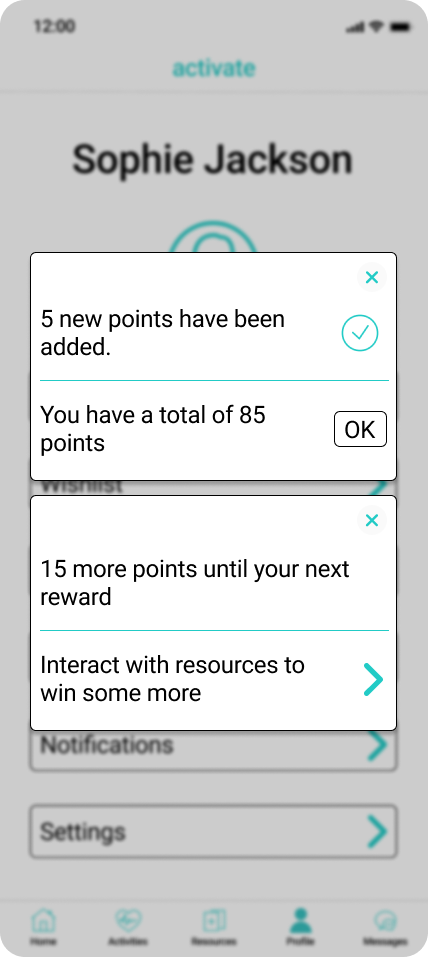

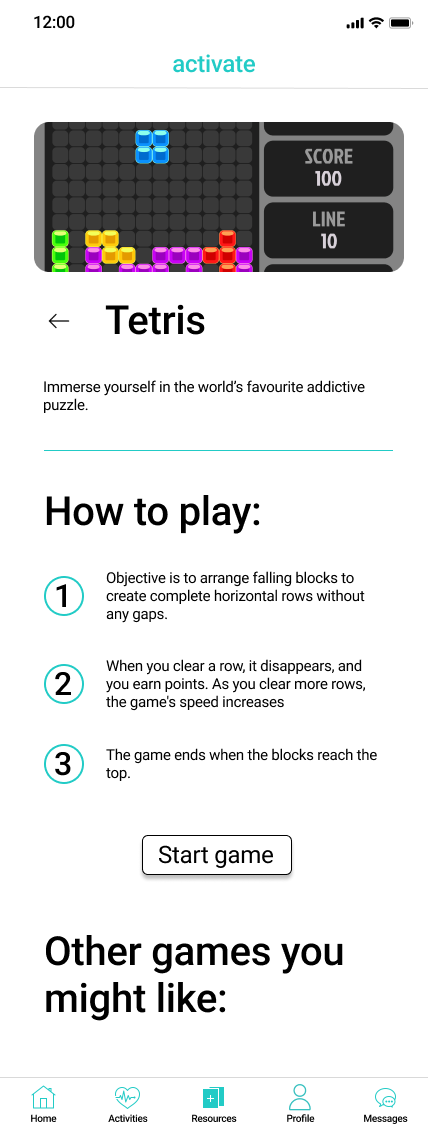
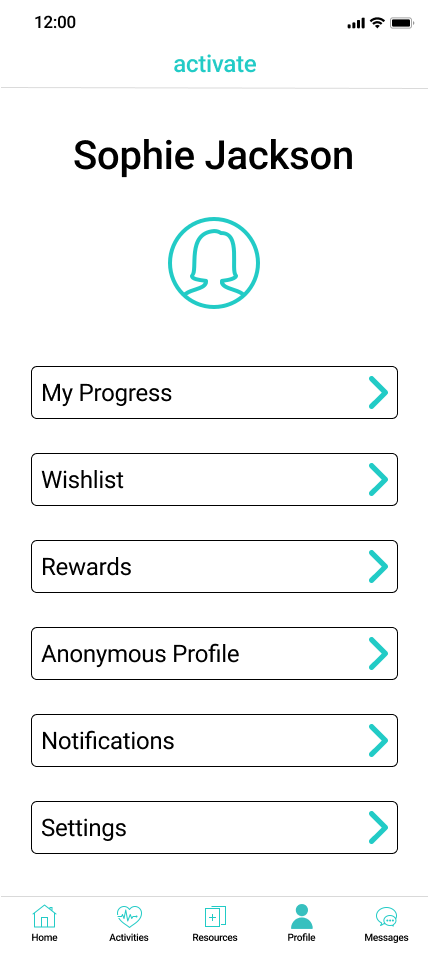

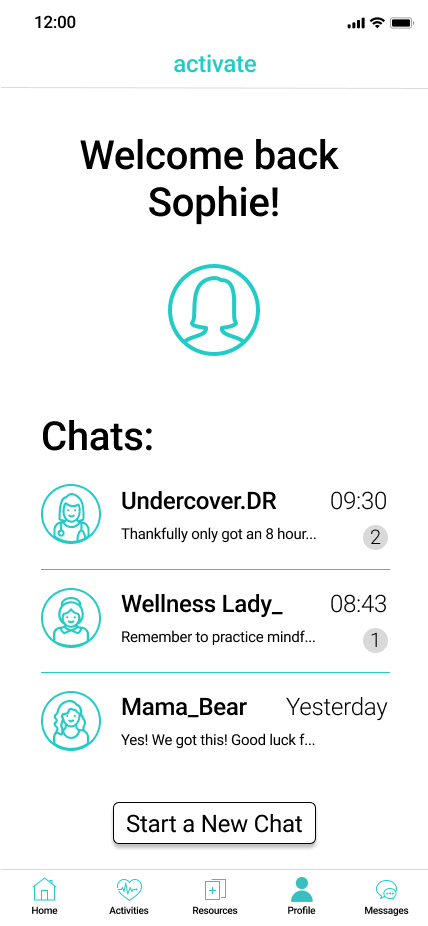
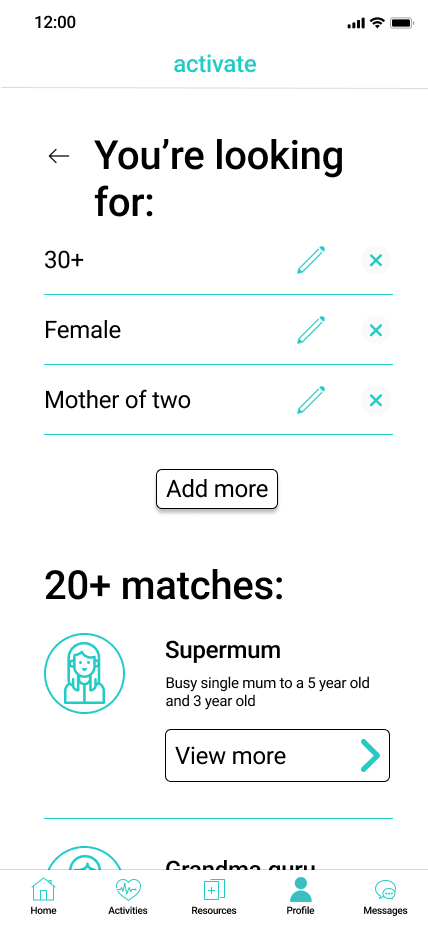
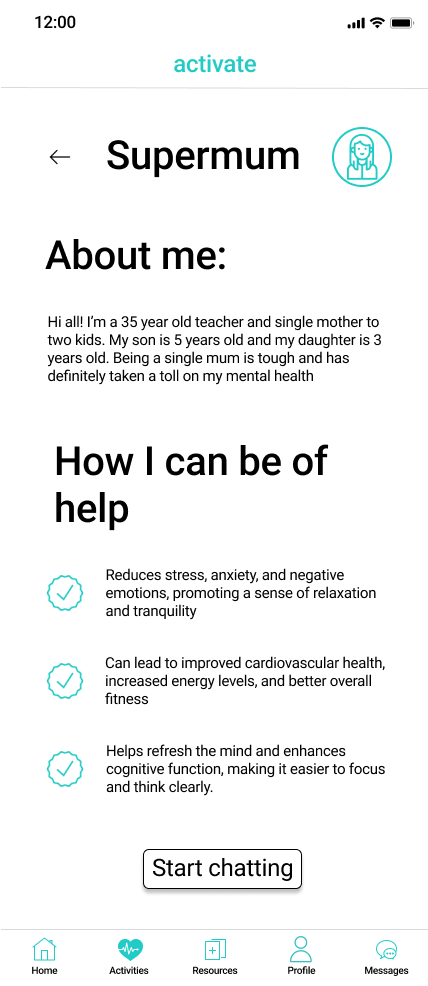
Future roadmap

Future vision
Male and female demographics
Other demanding occupations
Personalised advice based on their profession

Society
Publicising the challenges as campaigns
Newsletter promoting user’s stories/progress
Personal reflection

Good
Sought assistance when needed
Developed on my prototyping skills
Successfully used a design thinking model

Bad
Always looking at the bigger picture
Personal commitments disrupted my time management
Unable to regain control

Improve
Keep a neutral mindset throughout
Embrace project management tools
Other Work
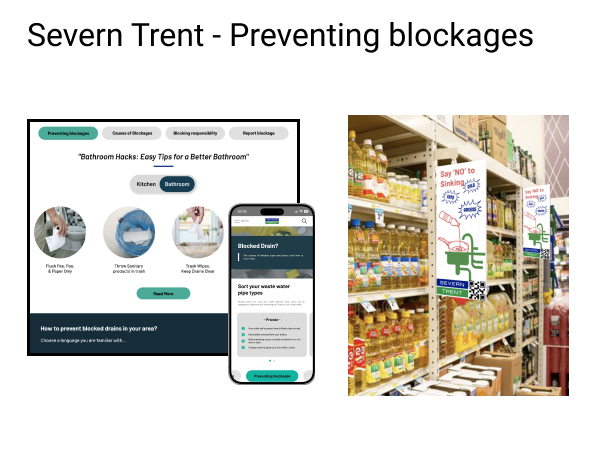
A team and client-based project with Severn Trent. The challenge was to assist Severn Trent in using their website and digital campaigns to engage minority groups and create attitudinal and behavioural changes when looking after sewers.
As a team, we successfully redesigned their website for web and mobile view whilst introducing a campaign within supermarkets to help initiate a behaviour change regarding their sewers.

This team-based project aimed to improve the user experience of the retail brand ‘ZARA’ by identifying usability issues of their e-commerce website.
Hypothetically, working as a design consultancy enabled us to conduct an effective usability evaluation using trusted tools and principles. The evaluation helped us to discover key findings and prioritise what needs to be redesigned on the website.

The project’s goal was to collaboratively work together as a team to design a mobile app that uses smart meter data to reduce the negative impact of domestic energy and that positively engages households in taking action regarding climate change.
‘SmartPlan’ is an app that…
- utilises data from the household’s smart meter to provide tips and goals for the family to achieve.
- provides the family with an opportunity to make their wish lists, establish savings objectives and earn points each time a goal is achieved.
- promises to unite the family by providing exciting new rewards and benefits.
Visionary Thinkers
Visionary Creators
Visionary Makers